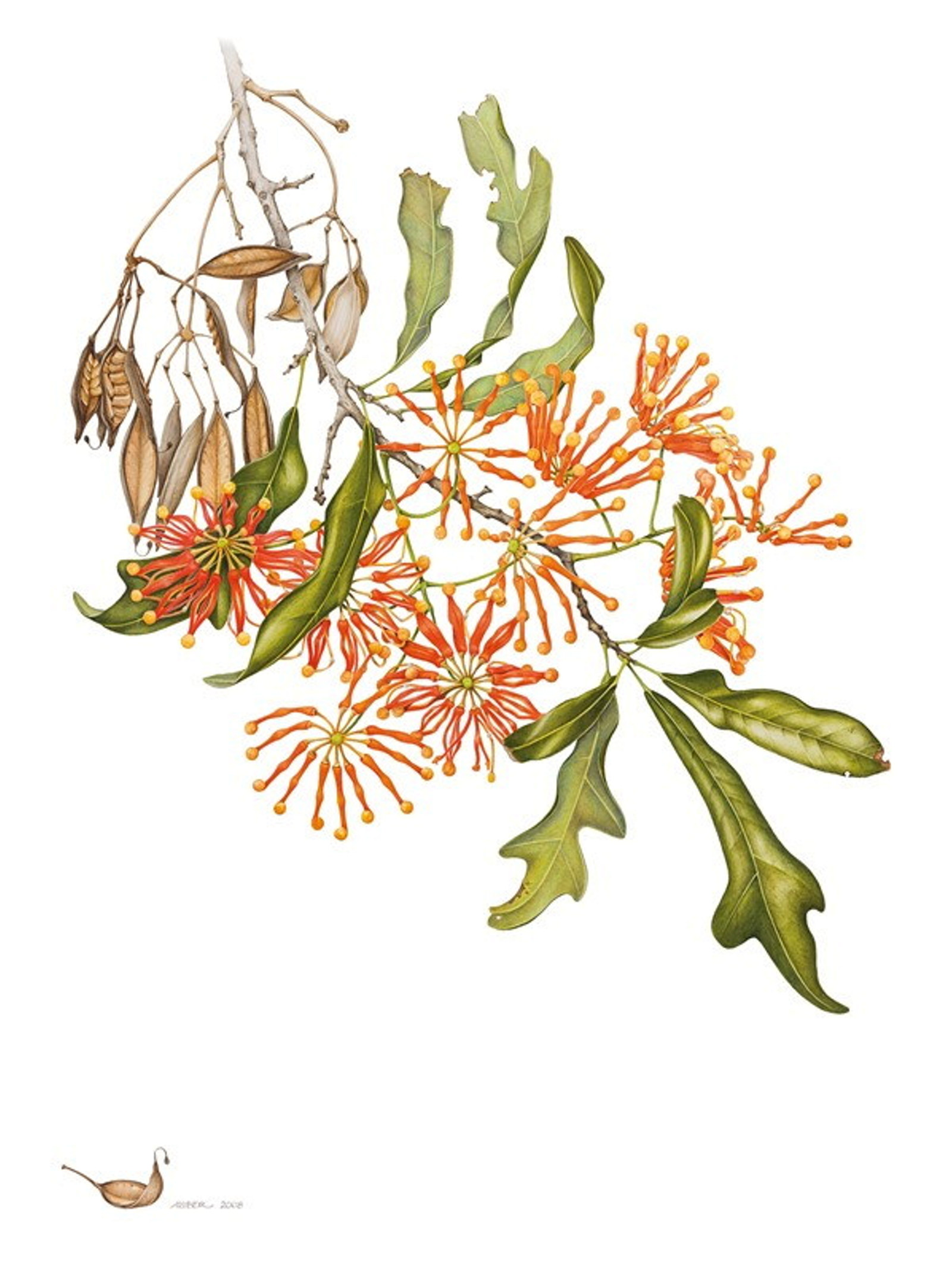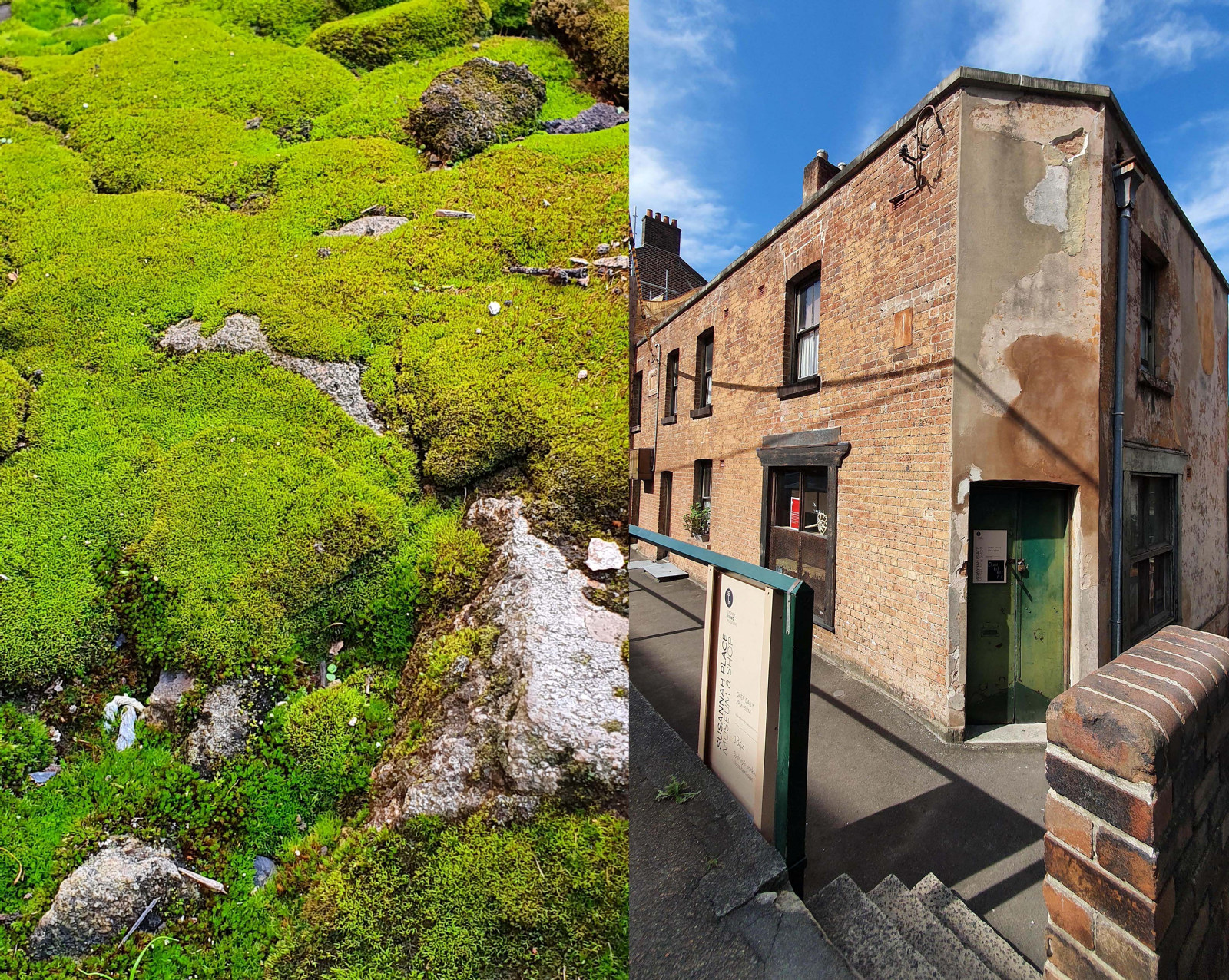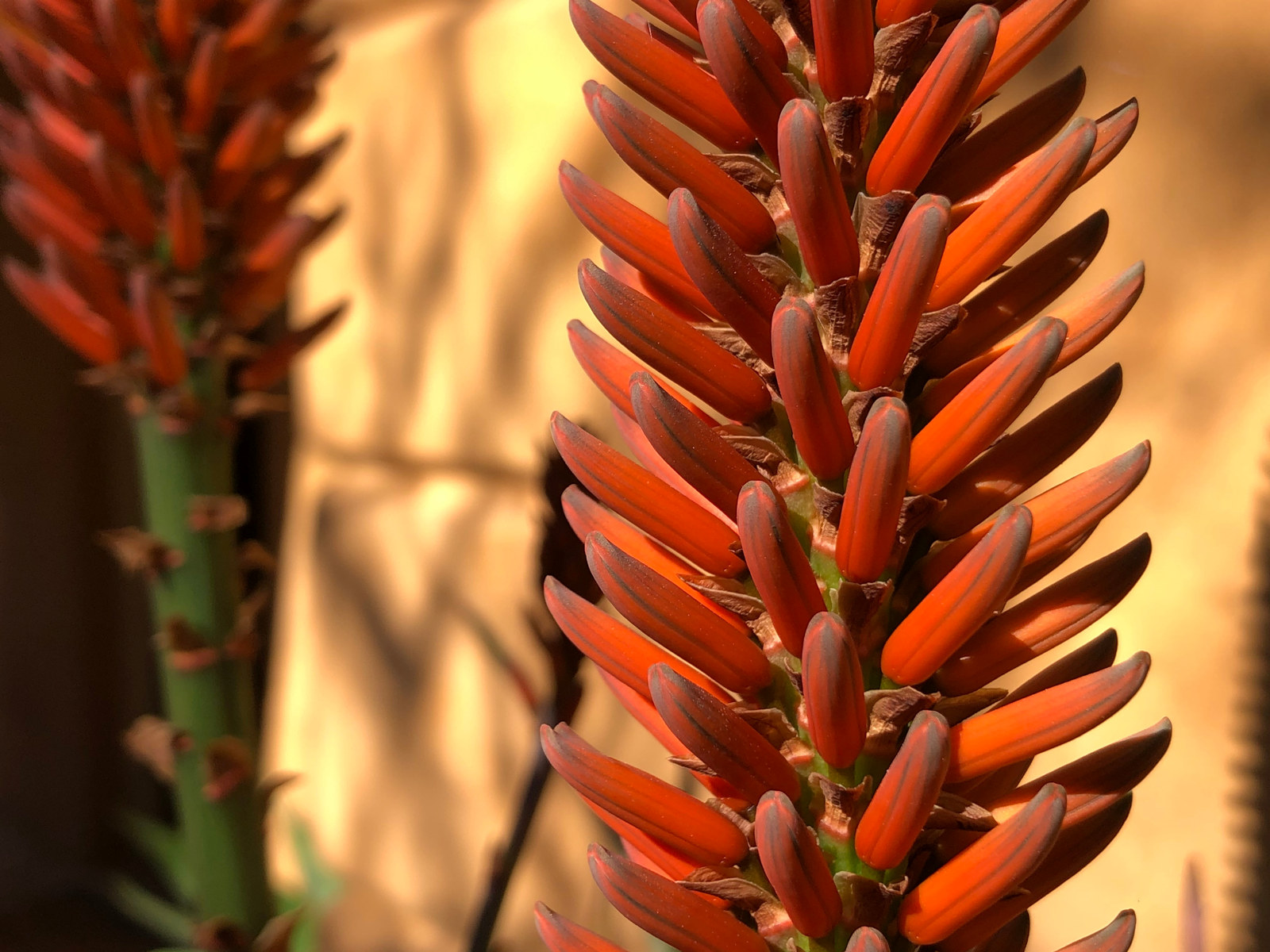A new weapon in the war on weeds
On a crisp winter’s morning, in the gravel driveway between The Mint and the North Range of the Hyde Park Barracks, MHNSW Horticulturists Steve Halliday, Helder Esteves and Craig Field appear and disappear behind a shape shifting white cloud. A black and yellow sign warns me there is “Spraying in Progress”, and I wonder for a moment why no one is wearing a mask, or even gloves. But the dangerous looking mist enveloping these men is not what it seems.
Next to them sits a black and green device, riding on mini off-road tyres. It looks like a cross between an air compressor, a diesel generator and very small steam train, and there’s a reason for that: it is.
Looking down into its dark heart, I see a hellish looking, diesel fuelled furnace, which is instantaneously heating the water being fed into it by an ordinary garden hose. The resulting product, a combination of steam and boiling water, is then fed down a long, heat shielded hose and finally, through a pin sized hole in the stainless steel head. What emerges, under 15PSI of pressure, is super-heated steam, and Steve and the team are using it to kill weeds.
The big ones smell like blanched spinach
says Helder Esteves, who looks like he should be cleaning carpets with the large, square-sided wand he’s waving over the gravel. He’s right about the smell. In fact the flat leafed specimens he’s just boiled to death have turned an intense, vibrant green and almost look delicious. But their rude health is just an illusion: by tomorrow, they will be full deceased, and a far less appetising shade of brown.
Using steam to kill unwanted moss and weeds is a relatively new practice for the MHNSW horticulture team, and the initial investment was significant compared to the low cost of the more commonly used glyphosate (often branded here as Round Up). The most obvious and immediate benefit of this new steam technology is that the substance being used in this age old battle with weeds is literally safe enough to drink. But look beneath the surface, and there’s a lot more going on.
In the soil under every weed is a seed bank - a cache of siblings if you like, ready to take the place of any above-ground member of the family who is plucked, eaten or chemically destroyed. Being hidden under the surface used to offer some protection for these weeds-in-waiting. But super-heated steam is able to penetrate up to 5mm below the surface.
This deep heating causes some seed banks to be “denatured” and die on first treatment. For others, it actually triggers a mass germination, which in turn allows the seed bank to be rapidly depleted by repeated surface treatments. A spike attachment can be employed to kill the roots of bulbous grasses, and a smaller, more directional nozzle is used around garden beds to protect the other plants.
The machine’s official name is the Weedtechnics Green Ninja Stealth which was designed and invented by Australian Jeremy Winer. According the Weedtronics website, Winer’s “Satusteam” technology overcomes the issue of herbicide resistance, avoids off-target damage when chemicals are carried by the wind, preserves soil biology, protects ground water from chemical run off and is far safer than herbicides for the operator.
At the end of the operation, the Green Ninja is loaded on to the back of a trailer and driven to its next mission: teaching the tenacious nutgrass at Vaucluse House a lesson.
Published on
Plant your history
Browse all
Florilegium plants
A gathering of flowers: the Florilegium collection
Finely detailed botanical artworks reveal the range of plants introduced to Sydney’s gardens over the past 200 years

Plant your history
A mossy analogy for Susannah Place: small but mighty
Mosses are everywhere! They are small, mighty, unsung and inhabit the most unusual places. They can be found in all our museum outdoor spaces if one looks closely enough

Plant your history
Acanthus - an apt symbol for The Mint
Look at any classical building today, anywhere in the world and chances are you will find an acanthus leaf lurking somewhere

Plant your history
Aloe arborescens ‘candelabra aloe’
Tours at Elizabeth Farm often start alongside a large bed of succulents, dominated by towering cactus
